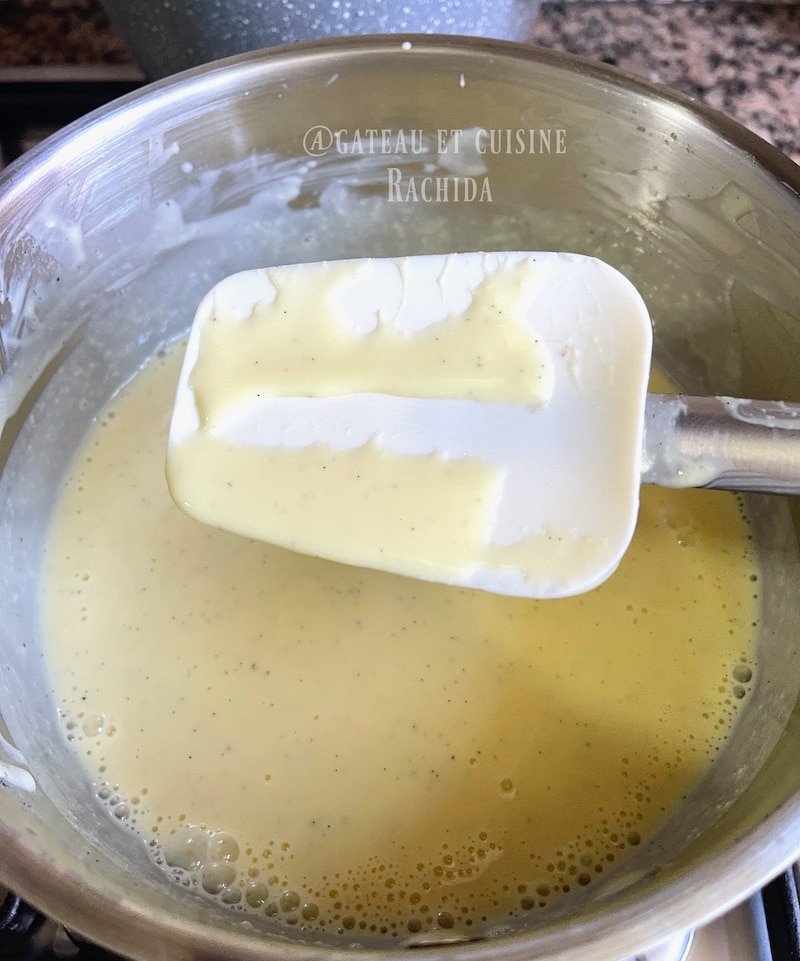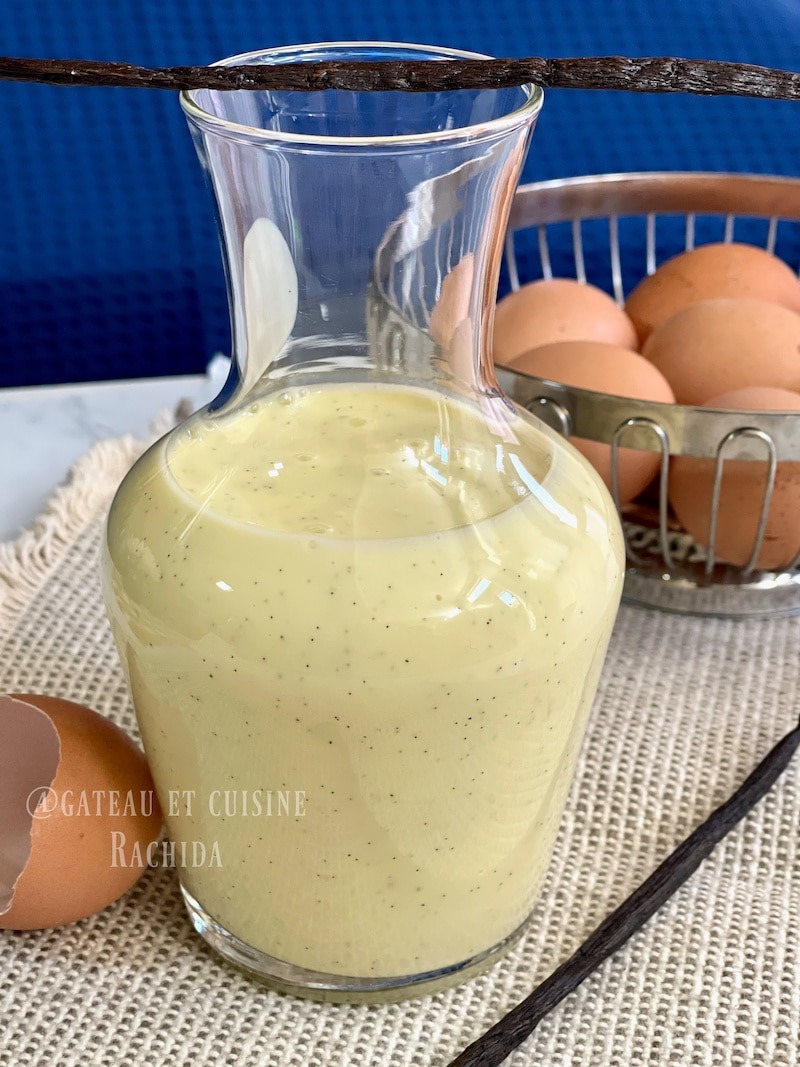Details on the ingredients
Whole milk, semi-skimmed, or a 50/50 mix of milk and heavy cream.
Egg yolks : Only egg yolks are used to make a custard. Depending on the recipe, 4, 5, or 6 egg yolks are used for 1/2 liter of milk. The more egg yolks the custard contains, the richer and creamier it will be. Most recipes use 4 egg yolks. I prefer to use 6 to optimize its creaminess.
Sugar : The quantity can vary from 85 to 125 g ( (3 to 4.41 oz) sugar according to taste.
Vanilla bean, vanilla sugar or pure vanilla extract

Tips for a Perfect Crème Anglaise
Should You Whisk Egg Yolks and Sugar Until Pale?
We’ve all gotten into the habit of whisking egg yolks and sugar until pale, but this isn’t the best approach for custards.
Whisking creates a foam that can be quite troublesome during cooking. Fortunately, it disappears and indicates that the custard is ready.
To avoid this, do not whisk the egg yolks and sugar too much.
Straining the Cream
Once you have made the cream, you need to strain it through a fine sieve to remove any milk particles.
Blending for Smoothness
If the texture isn’t to your liking, you can give it a quick blend with an immersion blender.
This will give you a silky smooth and luscious custard!
Cooking : A Key Point for Success
Crème anglaise is a very simple recipe, but perfecting it is another matter. Mastering the cooking process is the most important aspect. You need to cook the cream just enough for it to coat the back of a spoon, known as “cuisson à la nappe,*” but not too much to avoid coagulating the egg yolks.
The cooking should be done over medium heat, stirring in a figure-eight motion to slightly thicken the mixture. This technique is called “vanner la crème.” It is crucial to avoid bringing the crème anglaise to a boil. Using a thermometer can help monitor this step. The temperature should not exceed 85°C (185°F).
I never use a thermometer by adopting the simple trick below when the foam that forms begins to disappear, the end of cooking is near.
| * Cooking “à la nappe” involves continuously stirring the cream with a spatula until it coats the back of the spatula. To check if it’s done, dip the spatula in the cream and run your finger across it to draw a line. The line should be well-defined. |

